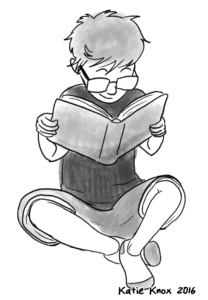pp. i-xiii
by Joan Wink
Published by Libraries Unlimited/ABCLIO
Copyright © 2018 by Joan Wink
This is a book about the power of story. The purpose of the book is to link libraries and literacies through the power of stories, both oral and written. This book is written for librarians, teachers, and families who love literacy. Readers will discover that it is not filled with data in the form of pie-charts, graphs, and scatter plots; rather, the truth of the research is grounded in authentic stories that reflect not only the interpretation of these data but also the transformative nature of literacies and libraries.
ALL WE WANT IS A STORY
“Joan, you know what you are? You are a storyteller,” a teacher said to me. “And, all we want is a story.” She stopped me in my tracks with that comment, as I was mid-career and perhaps a bit too serious about my lectures and my overhead transparencies. At that time, I really did think that teachers/participants only wanted me to talk about those transparencies. However, since then I have focused on storytelling, and I consistently find that, not only do stories break down barriers among people, they also help people access complex constructs, which are reflected in those stories.
It has become clear through personal experience and from social science that simply providing people with facts, information, and research does not change peoples’ behavior; however, tell a story, which has the data embedded in the life of a person, and often people will remember and begin to change behavior or at least consider an opposite point of view. Stories can move the human heart and head in ways that research cannot.
Literacy stories are loaded with data that are buried in the daily routines of real people. A story can make complex information accessible for all. People don’t want data; they want a good story. Also, an image does not hurt. Or, as storyteller Kendall Haven (2014) states it, “Picture, please! … By far the most important of these images is the one (or ones) that your audience will associate with your theme” (p. 146). For example, Figure 0.1 captures what you will read about in this book.
Stories bring together readers, writers, librarians, teachers, students and families in the libraries of today and tomorrow.







